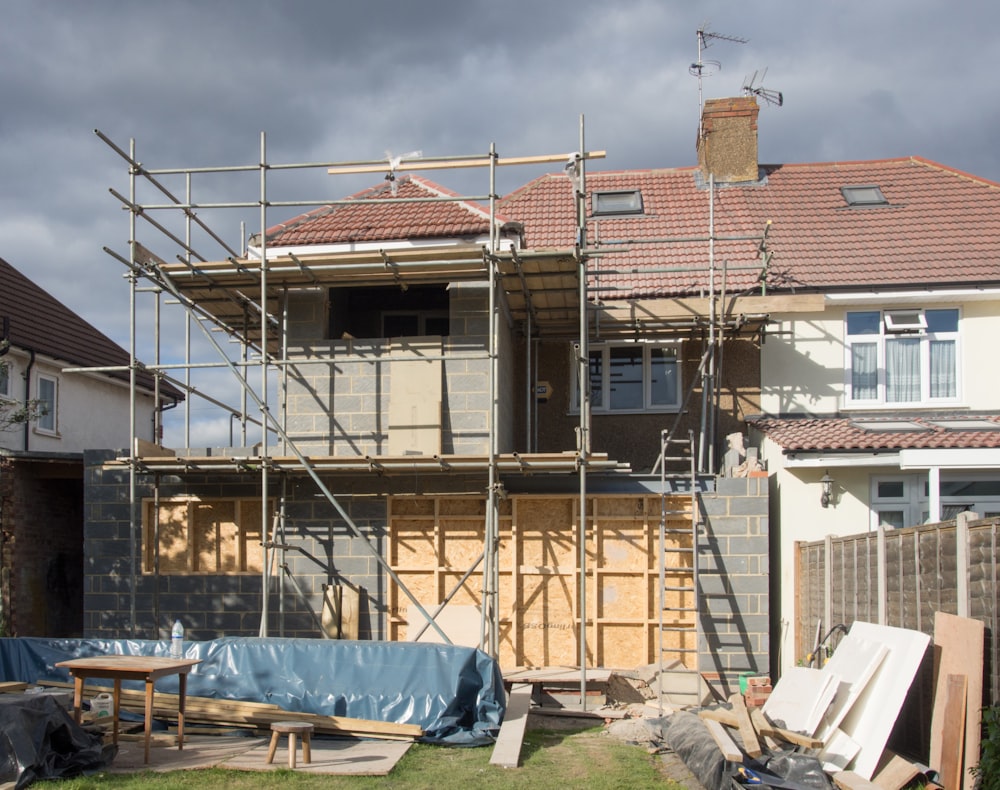
Many property owners are unaware of the fact that major construction is excluded from their standard insurance policy. This is true for homes, commercial buildings, and mixed use properties. If an owner wishes to renovate their property, changes must be made to the insurance policy, since the standard property policy most likely excludes any and all claims pertaining to a building under construction. In fact, many of these policies contain exclusions so strict that even if something unrelated to the construction damages the property during the remodel, it results in a denied claim. Let’s examine the following policy language from a standard homeowners insurance policy:
More likely than not, any loss would probably be at least indirectly related to the construction/renovation. In most cases it might be difficult to prove that a loss had NOTHING to do with renovation/construction, even if that is in fact the case. For example, if a kitchen fire breaks out in a building under construction, the presence of construction materials in the home may cause the fire to spread more rapidly an destroy the home. In this situation, the policy language above may be used to exclude coverage altogether, and thereby render the insurance policy worthless. During a period of construction, an owner must make sure to get a (temporary) insurance policy that is specifically designed to account for a building under construction.
So, what is the alternative? A Builders Risk (also referred to as a Course of Construction) policy is the answer. This is a type of packaged property and liability insurance policy that accounts for the risk posed by a construction project. Properties under construction often have higher risk for fires, theft/vandalism, water damage, and even risk of falling objects injuring people or property. A Builders Risk policy accounts for these risks. These policies also account for both the existing structure and the cost of the building materials on the property, whether on the premises or in transit.
Essentially, the way that a standard homeowners policy becomes a Builders Risk policy, is with the addition of an endorsement for Builders Risk coverage. Here’s an example of the language, clearly expanding coverage to construction:
For commercial buildings under construction, oftentimes a separate Builders Risk policy will temporarily replace the regular property policy, until construction is complete. Typically, these policies will last anywhere from 3-12 months, and are typically not renewed. Once construction is done, the Builders Risk policy is dropped, and the standard property policy is brought back again. For projects that take longer, such as new construction for larger buildings, longer policy terms are an option.
Many standard homeowners carriers do not offer Builders Risk policies. If this is the case with your carrier, we can help secure you a temporary Builders Risk policy to properly cover your home/building during construction. When construction is complete, we simply cancel the Builders Risk policy and refer you back to your previous insurer or we can make a referral to a trusted colleague.
If your building is severely damaged, or you’ve recently had a property claim, we can help you get your building properly insured. This is true even if the building is currently damaged and you don’t plan to repair it for a while. Here is an article on finding insurance for damaged buildings and buildings with claims.
Reach out if you have questions about construction insurance. We are happy to help!





